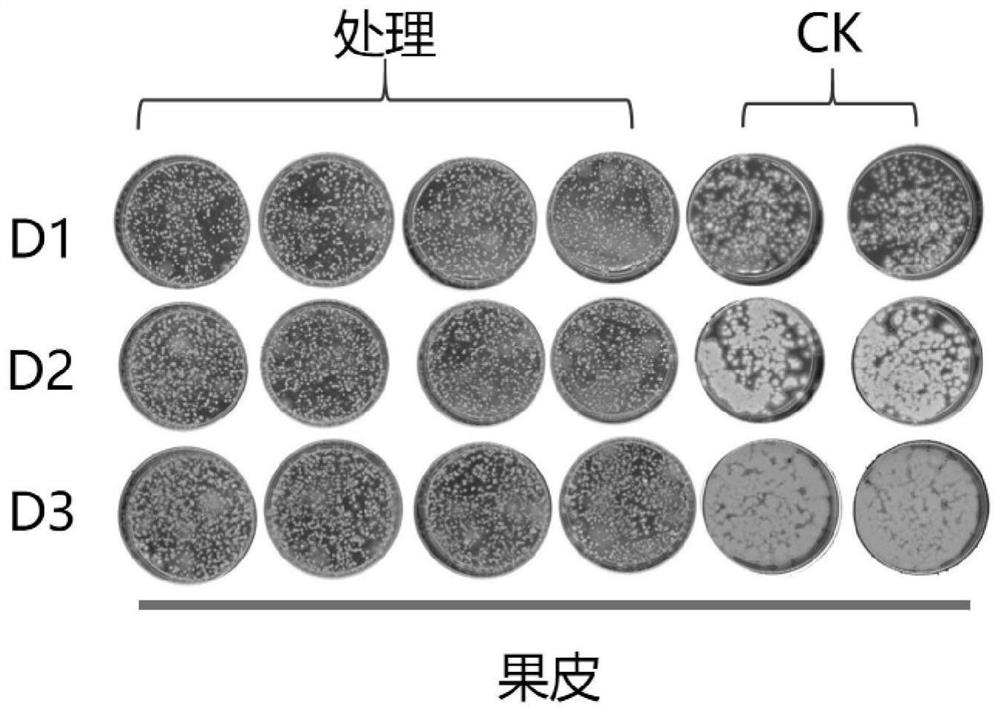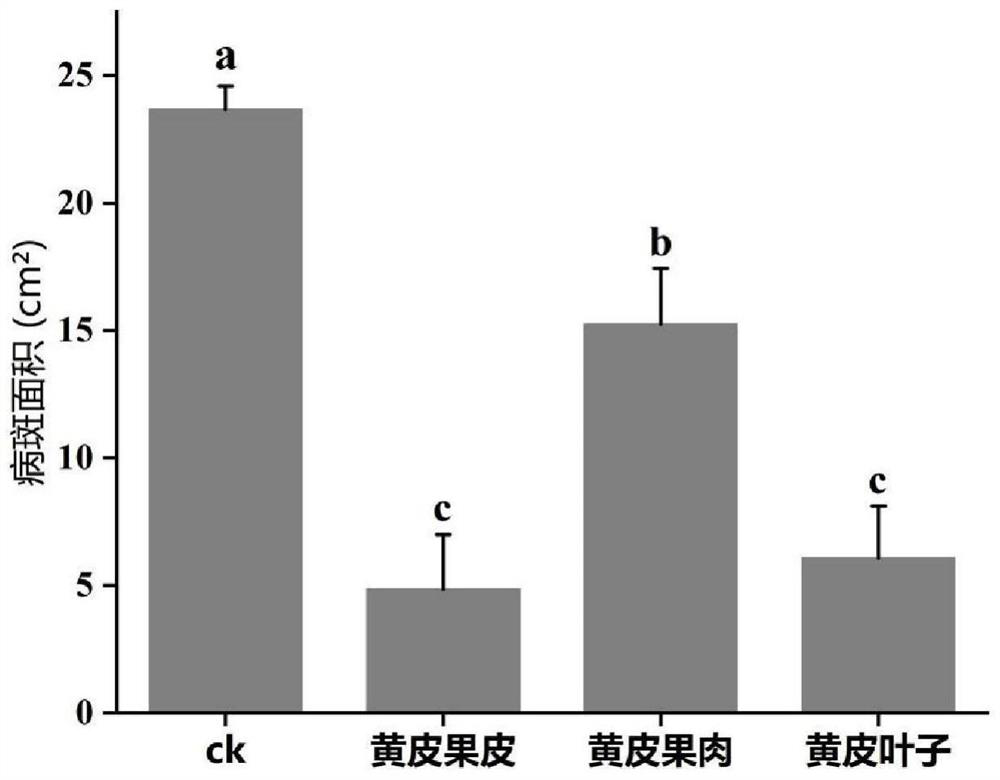Method for inhibiting growth of penicillium and reducing rotting rate of picked citrus fruits
A technology for citrus and Penicillium, which is applied in the field of inhibiting the growth of Penicillium and reducing the postharvest rot rate of citrus fruits, and can solve the problems of pesticides entering the human body, pesticide residues, and health threats
- Summary
- Abstract
- Description
- Claims
- Application Information
AI Technical Summary
Problems solved by technology
Method used
Image
Examples
Embodiment 1
[0043] Inhibitory effect of different plant tissue materials processed and not subjected to secondary processing
[0044] The yellow skin, yellow pulp, and yellow leaves were naturally air-dried and ground into powder for antibacterial test. At the same time, the following extraction methods were used to obtain the corresponding extracts for antibacterial test, and the antibacterial effect was observed later.
[0045] Antibacterial tests are divided into the following groups:
[0046] (1) Ethyl acetate, 80% ethanol aqueous solution, and dichloromethane were used as extraction solvents, and ultrasonic-assisted extraction of wampum leaf powder was performed with a material ratio of 1:10, and ultrasonication was performed for 40 minutes. Cool to room temperature after ultrasonication, place in a 50mL centrifuge tube, centrifuge at 8000r / min for 2min, take the supernatant and filter it through a 0.22μm filter membrane under reduced pressure to obtain three different extracts. Th...
Embodiment 2
[0054] After washing the yellow skin leaves and laying them flat to dry, select the complete and disease-free leaves for later use. Clementine and Wenzhou satsuma fruits (Germplasm Resource Garden of Huazhong Agricultural University) with uniform color change, no scars on the fruit surface and consistent maturity were selected, and the fruit and vegetable sorting line was cleaned, sorted and dried before sample processing. . The citrus fruits were mixed with the leaves of the citrus fruit and stored at room temperature (18-25°C) and the relative humidity (RH) was 85%-90%. The 210 fruits of each citrus treatment and control were divided into three groups, each group For 70 fruits, spread a layer of yellow leaves on the bottom and top of the fruit, place them in fruit boxes and seal the fruit boxes properly with PE plastic film (not completely sealed), count the number of rotten fruits every six days, and calculate the average rot rate.
[0055] After the clementine and satsuma...
Embodiment 3
[0058] Ponkan fruits with uniform color change, uniform size, and no wounds were selected for use (Germplasm Resource Garden of Huazhong Agricultural University). Grind the peel and leaves of the ponkans and accurately weigh 80g and put them into plastic boxes with holes around them, then store the ponkans in cartons respectively. Each group has 40 fruits, and the carton is sealed with PE plastic film (not completely sealed). The number of rotten fruits was counted every six days, and the average rot rate was calculated.
[0059] After 30 days of storage, the fruit rot rates of the control group were 7.5%, 9.17%, 14.17%, and 22.5%, respectively. The fruit rot rates of the yellow-skinned and peeled groups were 4.17%, 8.33%, 15%, and 21.67%, respectively. The rot rate of the fruit of leaf treatment group was 8.33%, 12.5%, 14.17%, 15%, see Figure 5 .
[0060] The above data showed that with the prolongation of the storage period, when the post-harvest treatment was 30 days, ...
PUM
 Login to View More
Login to View More Abstract
Description
Claims
Application Information
 Login to View More
Login to View More - R&D
- Intellectual Property
- Life Sciences
- Materials
- Tech Scout
- Unparalleled Data Quality
- Higher Quality Content
- 60% Fewer Hallucinations
Browse by: Latest US Patents, China's latest patents, Technical Efficacy Thesaurus, Application Domain, Technology Topic, Popular Technical Reports.
© 2025 PatSnap. All rights reserved.Legal|Privacy policy|Modern Slavery Act Transparency Statement|Sitemap|About US| Contact US: help@patsnap.com



